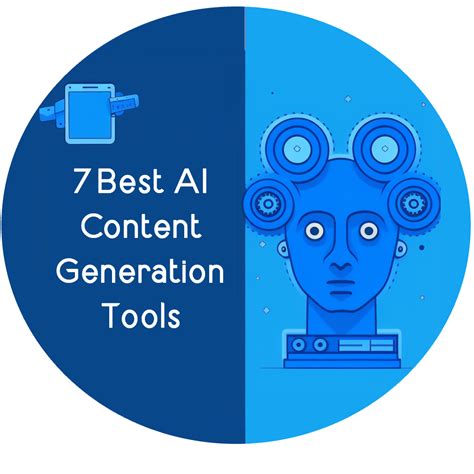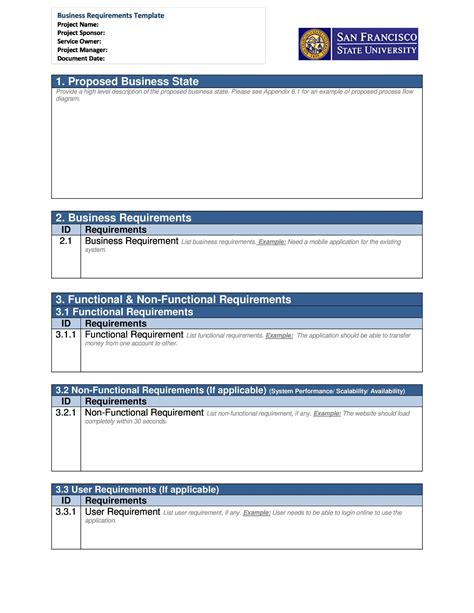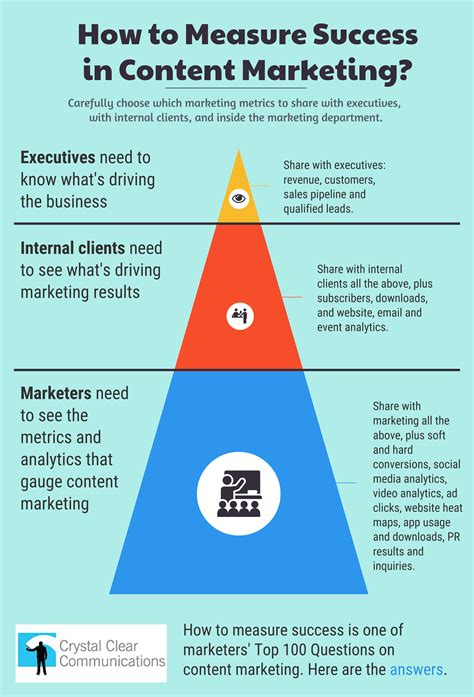Breaking News


Popular News


Learn how to create content with AI: select tools, specify requirements, develop, refine, and measure the success of your AI-generated content efficiently.As we navigate the fast-paced evolution of the digital landscape, artificial intelligence (AI) teases the imagination with its promise to revolutionize content creation. But how do we harness this cutting-edge technology to produce compelling and efficient content? Whether you’re a seasoned digital marketer, an enterprising blogger, or a curious entrepreneur, understanding how to incorporate AI into your content production process can be a game-changer. In this blog post, we delve into the intricacies of AI-powered content generation, guiding you through the selection of the right AI tools, how to tailor these tools to meet your specific content needs, ways to co-create alongside AI, and the critical steps to refine and evaluate the output. Get ready to unlock a new horizon of possibilities and learn how to produce top-tier content with a touch of artificial intelligence!
Contents

Understanding AI content generation is fundamental to leveraging its utilities in the field of digital content creation. In this era, where content is king, the ability to quickly produce high-quality, relevant material is invaluable, and AI has become an indispensable ally for content creators. AI content generators employ complex algorithms and machine learning techniques to analyze vast amounts of data, extract patterns, and ultimately emulate human-like content creation abilities across diverse topics and styles.
At the heart of this technology is natural language processing (NLP), a branch of AI that enables these tools to understand, interpret, and generate human language in a way that is not only syntactically correct but also contextually relevant. This involves a number of sub-processes such as tokenization, part-of-speech tagging, and semantic analysis. With advancement in deep learning, models such as GPT-3 have pushed the boundaries of what’s possible in content generation, allowing for outputs that can often be indistinguishable from those written by humans.
Moreover, the applications of AI content generation are not confined to mere text production; they extend into fields such as marketing for the creation of ad copy, in journalism for drafting initial reports, and in entertainment for scripting and storyboarding. Each of these use-cases presents its own set of challenges and requires specific models that are trained on relevant datasets to provide output that meets the high standards of the industry.
To illustrate, consider the underlying workflow of an AI content generation tool with the help of a table:
| Step | Description |
|---|---|
| Data Input | A corpus of text or dataset is fed into the AI, providing a foundation for learning textual patterns. |
| Model Training | The AI analyzes the data, learning nuances of language, style, and information relevant to the content goals. |
| Output Generation | Based on the input query or prompt, the AI generates content, mimicking the learned patterns and styles. |
| Review and Refine | The generated content is then reviewed and refined, either by additional AI processes or human oversight. |
Understanding the intricacies of AI content generation is the stepping stone to mastering its potential for efficient and effective digital content creation.

When venturing into the realm of artificial intelligence for content creation, choosing the right AI tool is a pivotal step that can significantly impact the efficiency and quality of your output. With a diverse range of AI platforms at your disposal, it’s essential to carefully assess which tool aligns best with your content goals and workflow. Assessments should be based not only on the tool’s ability to generate high-quality content but also on its adaptability to your specific needs, ease of use, integration capabilities, and the level of control it allows over the content generation process.
In the decision-making process, several factors come to the forefront. Firstly, one must consider the tool’s proficiency in understanding AI content generation, as it should have a robust understanding of language semantics and context. Equally important is discerning whether the platform specializes in certain types of content or if it offers a more general approach, which can be a critical determinant in fulfilling specific content requirements. Furthermore, it’s advisable to examine the range of formats supported by the AI tool, from blog posts to social media updates, to ensure that it can cater to the diverse content forms you may need.
To further refine your selection, explore how each AI tool facilitates developing content. Some platforms offer more guidance with built-in frameworks and templates, while others pride themselves on advanced customization features that promote refining and editing AI-generated content. Additionally, look into the tool’s scalability and how well it can grow with your content demands over time. Lastly, confirm that it provides analytics to aid in measuring the success of AI-produced content, thus enabling you to track performance and continually optimize your content strategy.
It’s crucial to invest time in trials and firsthand experiences with different AI tools. This hands-on approach allows you to discern nuances in the user interface and gauge the responsiveness of customer support if you encounter issues. Remember, the optimal tool is one that not only promises sophisticated AI capabilities but also aligns with your content objectives and simplifies the content creation process — thereby enhancing both productivity and content quality in your projects.

When leveraging artificial intelligence to craft compelling content, one cannot understate the value of inputting specific content requirements. These parameters guide the AI, enabling it to produce targeted material that resonates with your intended audience. Whether your focus is on SEO-driven blog posts, technical articles, or creative storytelling, the provision of detailed instructions plays a pivotal role in achieving content that is not only relevant but also purpose-driven.
By defining the scope through explicit criteria, content creators can ensure that the output aligns with the tone, style, and substance desired. This can include, but is not limited to, the incorporation of certain keywords, adherence to a specific word count, and accounting for the appropriate reading level best suited for the target demographic. Here is where creators exercise control over the AI’s generative capabilities, turning broad concepts into content assets that serve precise objectives. Hence, the precision of the input significantly influences the quality of the generated content.
The integration of specific requirements can be approached methodically by using structured data, such as lists or tables, which effectively communicate the variables that the AI should consider. For instance:
| Requirement | Description | Example |
|---|---|---|
| Content Length | Number of words or pages the content should encompass. | 2000 words for an in-depth guide |
| Target Audience | The demographic or user persona the content is intended for. | Young entrepreneurs seeking business advice |
| Visual Elements | Inclusion of images, videos, or infographics to enhance engagement. | Embedding how-to videos for a tutorial post |
| Content Format | The structure of the content, such as listicles, how-to guides, or Q&As. | Listicle of top 10 productivity apps |
With careful consideration and strategic planning, inputting specific content requirements becomes a cornerstone in the seamless production of high-quality AI-generated content. It empowers creators to harness the full potential of AI tools, yielding customized content that meets the expectations and needs of their target audience while upholding brand consistency and messaging. Ultimately, this preparatory step is an investment in both the efficiency and efficacy of AI-assisted production workflows.

The advent of artificial intelligence has revolutionized the way in which content creators approach the development of new material. Utilizing AI tools for content development is a sophisticated process that involves the integration of machine learning algorithms and language models that can generate, augment, and enhance textual output. The implementation of such technology streamlines the content creation process, making it both time-efficient and highly customizable to specific user needs.
When developing content using AI assistance, it is essential to first determine the scope of the project and the complexity of the subject matter at hand. Crafting engaging and relevant content is a nuanced process, and the AI’s ability to comprehend context and tone plays a pivotal role. Thus, content developers must input detailed guidelines and parameters to ensure that the AI tool generates material that aligns with the intended message and audience.
Incorporating AI into content development cycles does not eliminate the human element; rather, it serves as a collaborative partner, providing a foundation upon which creators can build more nuanced and finely-tuned narratives. For instance, AI content generation tools can be instructed to draft an outline or a first draft of an article, which the human creator can then refine, contextualize, and personalize.
The effectiveness of AI in content creation becomes evident in tasks such as data analysis and pattern recognition, which are meticulous and oftentimes cumbersome for humans. AI excels at processing large sets of data to uncover trends that might inform content strategies. Furthermore, content developers leveraging AI assistance can benefit from the generation of content ideas and headings, allowing them to maintain a consistent stream of relevant and compelling content for their target audience.
| Content Creation Phase | AI Assistance Role |
|---|---|
| Initial Idea Generation | AI provides a range of topics and headlines based on predefined inputs and current trends. |
| Content Drafting | AI tools create initial drafts that serve as a basis for further refinement by the content creator. |
| Data Analysis for Content | AI processes quantitative data to assist in the creation of content that is factual and backed by statistical evidence. |
| Pattern Recognition for SEO | AI recognizes and suggests content patterns that align with SEO best practices to improve search rankings. |
The journey of producing high-caliber content does not conclude with the mere generation of words and phrases by an AI; it demands a meticulous process of refining and editing AI-generated content. This crucial phase encapsulates the act of converting raw AI output into polished, audience-ready material. To achieve this, a comprehensive understanding of the interplay between machine-generated text and human sophistication is paramount.
Upon the generation of content, one should engage in a rigorous assessment, examining the flow and coherence of the AI’s output. Such scrutiny ensures that the content is not only grammatically sound but also aligns perfectly with the designated style and tone appropriate for the target audience. Employing the necessary modifications to the AI’s syntax and diction elevates the material and infuses it with a natural, more relatable voice, enhancing the overall readability and engagement.
Furthermore, while AI can produce structurally sound content, it is the role of the content specialist to imbue the text with relevant contextual subtleties. This involves inserting sector-specific knowledge, case studies, or even anecdotes that the AI may not have incorporated. It is this human touch that often makes the content resonate more deeply with readers.
To effectively organize the editing process, consider using the following list as a guide to refine AI-generated content:
In addition to these steps, creating a comparative table highlighting the differences between pre-edit and post-edit versions can offer useful insights for future collaborations with AI tools. Such a table underscores the transformation a piece undergoes to meet human editorial standards.
| Before Editing (AI-Generated) | After Editing (Human-Refined) |
|---|---|
| Sentence generated by AI that is lengthy and potentially cumbersome, lacking personalized elements or specific brand alignment. | Redrafted sentence that maintains the original concept but is reworked to be concise, incorporating brand-specific language and tailored to audience preferences. |
| Paragraph that technically addresses the topic but lacks the kind of engaging elements such as vivid descriptions or storytelling. | A reimagined paragraph which keeps the AI’s informational core but weaves in storytelling elements to captivate and retain reader interest. |
| Use of generic terms and phrases that lead to an impersonal tone, possibly alienating the reader. | Strategic use of colloquialisms or industry-specific jargon that adds warmth and personality, fostering a connection with the reader. |
Editing AI-generated content is not merely about correcting errors; it is an art of enhancing and personifying the text to reach its highest potential. With the suitable application of human creativity and critical thinking, AI-generated content can be transformed into exceptional pieces that meet the needs of content strategies and audience expectations alike.

Upon implementing artificial intelligence (AI) in content production, the critical phase that cannot be overlooked is measuring the success of AI-produced content. It is essential to gauge whether the content meets the established objectives and how it resonates with the intended audience. Extensive analysis provides insights that inform necessary adjustments, enhancing future content strategy and AI utilisation.
To accurately assess the performance of AI-generated content, it is imperative to consider a multitude of metrics, which can be collected and analyzed through various analytics tools. These may include qualitative metrics such as audience engagement and reception, or quantitative metrics such as traffic, bounce rates, and conversion rates. Employing such metrics allows content strategists to discern the efficacy of AI implementations in content creation.
Key performance indicators (KPIs) play a crucial role in evaluating the effectiveness of AI-produced content. These indicators can include but are not limited to:
Additionally, implementation of a comparison framework against traditionally crafted content can reveal insights about the respective strengths and weaknesses. A properly structured comparative analysis will yield data on whether AI-generated content achieves the desired outcomes more efficiently or effectively than its human-authored counterparts.
| Performance Metric | AI-Produced Content | Human-Authored Content |
|---|---|---|
| Engagement Rate | Data Point A | Data Point B |
| Conversion Rate | Data Point C | Data Point D |
| SEO Ranking | Data Point E | Data Point F |
In the final analysis, continuous monitoring and adaptation is required. Advanced analytics can provide deeper understanding, enabling ongoing optimization of both the AI tools and the content itself. Through the iterative process of testing, measuring, and refining, AI-produced content can be honed to perform at its very best, yielding substantial advantages for businesses in the competitive digital landscape.

What is artificial intelligence?
Artificial intelligence, or AI, refers to the simulation of human intelligence in machines that are programmed to think like humans and mimic their actions. It encompasses a range of technologies capable of learning, problem-solving, and potentially creating content.
How can AI be used to produce content?
AI can produce content by using natural language processing and machine learning algorithms. Tools like GPT-3 (Generative Pre-trained Transformer 3) can generate articles, stories, and even poetry by processing large amounts of data and learning how to structure information coherently.
What kinds of content can AI produce?
AI is capable of producing a myriad of content types such as blog posts, news articles, social media updates, marketing copy, and even creative works like poetry and fiction. In some cases, AI can also assist in creating visual content such as imagery and videos.
Is content created by AI unique?
Yes, content created by AI can be unique as long as the algorithms are generating text based on learned patterns without directly copying existing material. However, it’s important to review and fact-check AI-generated content to ensure its originality and accuracy.
Can AI replace human content creators?
While AI can assist with the content creation process and generate basic write-ups, it lacks the nuanced understanding and emotional depth that human content creators bring to the table. AI can be a useful tool but is unlikely to completely replace human creativity and insight.
What are the benefits of using AI for content production?
The benefits of using AI for content production include increased efficiency, the capability to scale up content creation, cost-effectiveness, and the ability to quickly generate drafts or ideas that can later be refined by human editors.
How do I ensure the quality of AI-produced content?
To ensure the quality of AI-produced content, it’s important to closely review and edit the material, check for factual accuracy, make adjustments for brand voice and style, and where possible, infuse it with human insights and unique perspectives.